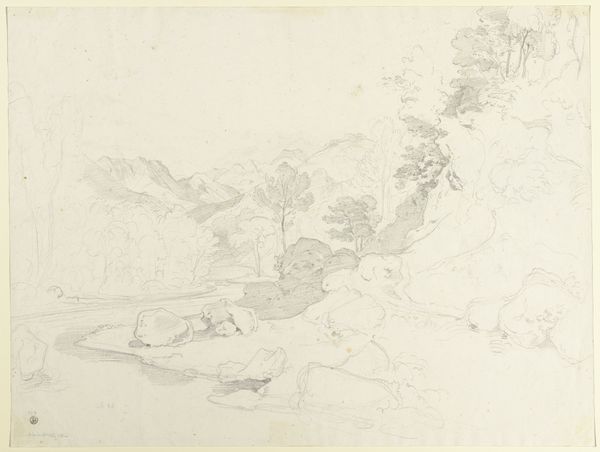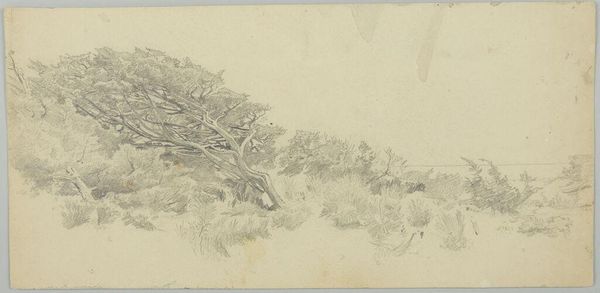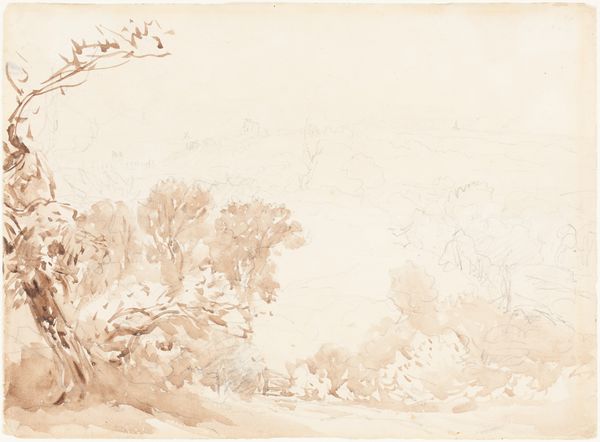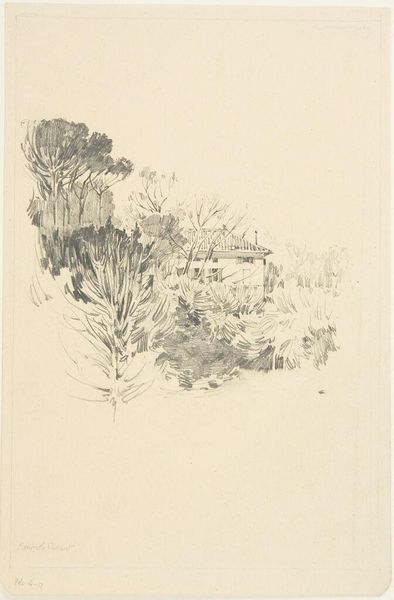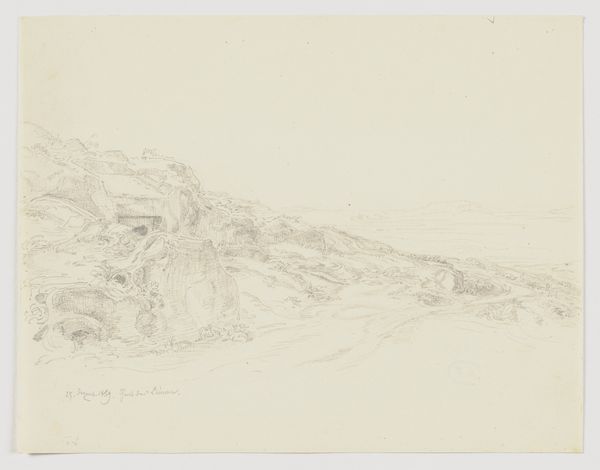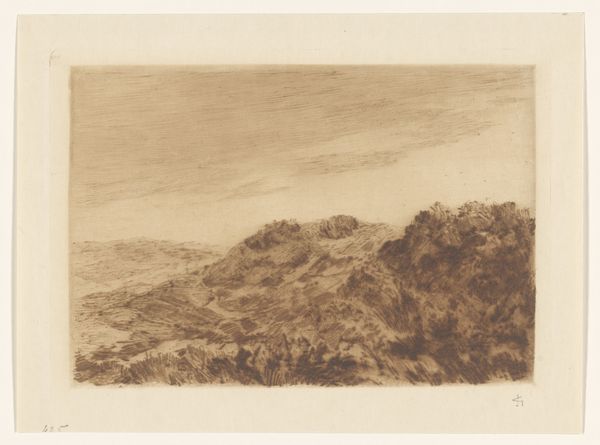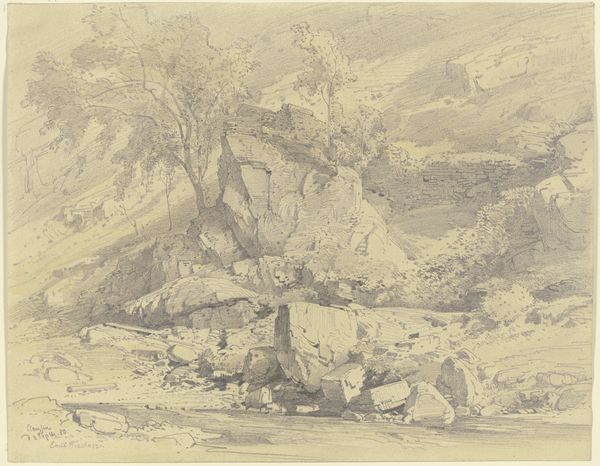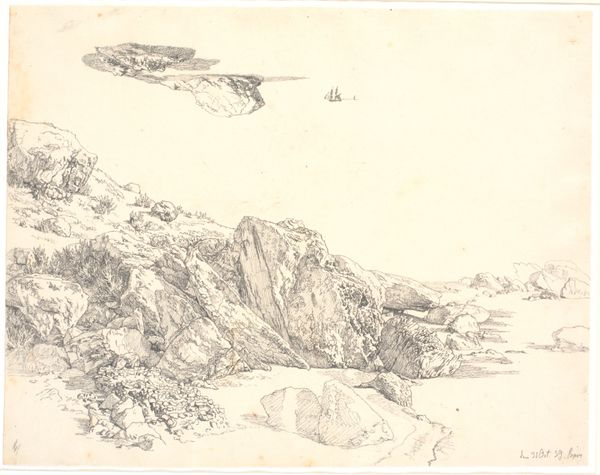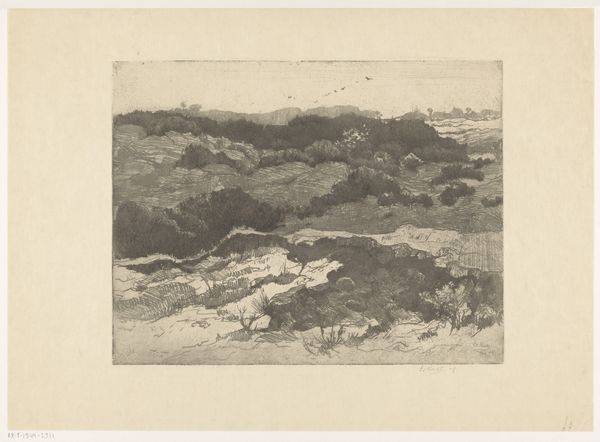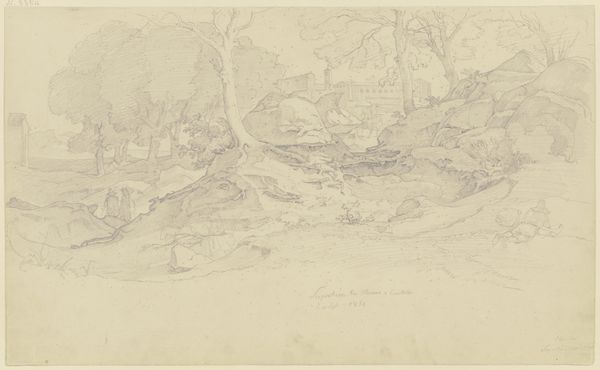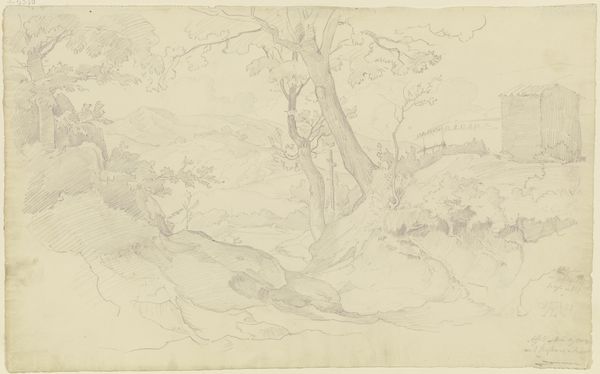
Dimensions: 9 3/16 x 16 1/16 in. (23.34 x 40.8 cm) (image)15 1/16 x 20 3/16 in. (38.26 x 51.28 cm) (sheet)
Copyright: Public Domain
Curator: This is Ker Xavier Roussel's "People at the Seashore," a color lithograph created around 1899, now residing here at the Minneapolis Institute of Art. Editor: My first thought is just how delicate it feels. The colors are so muted and blended; it's almost dreamlike. Curator: Roussel was part of the Nabis, a Post-Impressionist avant-garde group heavily influenced by Symbolism and Japanese prints. We see this reflected here—it's not just a depiction of a seashore, but a constructed vision, influenced by personal mythology. The landscape is flattened, almost like a stage set. Editor: The choice of lithography seems crucial. That chalky, granular texture works perfectly with the ethereal mood. It reminds you of early color photography, somehow, where the process itself adds to the feeling of distance. What does this say about late 19th century ideas about progress or leisure? Curator: I think that idea of manufactured paradise is critical to understand it. France in the late 19th century, was experiencing significant social upheaval, and artists often created these imagined Arcadias as escapes. This ties into the larger trend of idealized rural life. It’s more than leisure; it’s an explicit artistic choice that removes the messy realities of labor and industrialization. Editor: Yes! The materials absolutely reinforce that sense of an artificial haven. Lithography was a relatively accessible medium, making art available to a wider audience, even as the image portrays a decidedly bourgeois fantasy. So there’s that material contradiction. I also notice how he used the color, almost layering it, with a kind of porous effect that gives an handmade impression to the entire printmaking. Curator: Absolutely, and that perceived "innocence" had a real cultural impact. It reinforced certain ideas about class and gender roles at a time of increasing urbanization. Roussel's work became embedded within a cultural conversation of yearning for an older order. Editor: Considering this lithograph’s creation process and how Roussel's aesthetic decisions resonate in the material—it makes me see the piece as less nostalgic yearning, and more a quiet reflection of its place within culture itself. Curator: I see your point; a potent reminder of the politics embedded in our visual comforts, still echoing in today’s world.
Comments
No comments
Be the first to comment and join the conversation on the ultimate creative platform.

